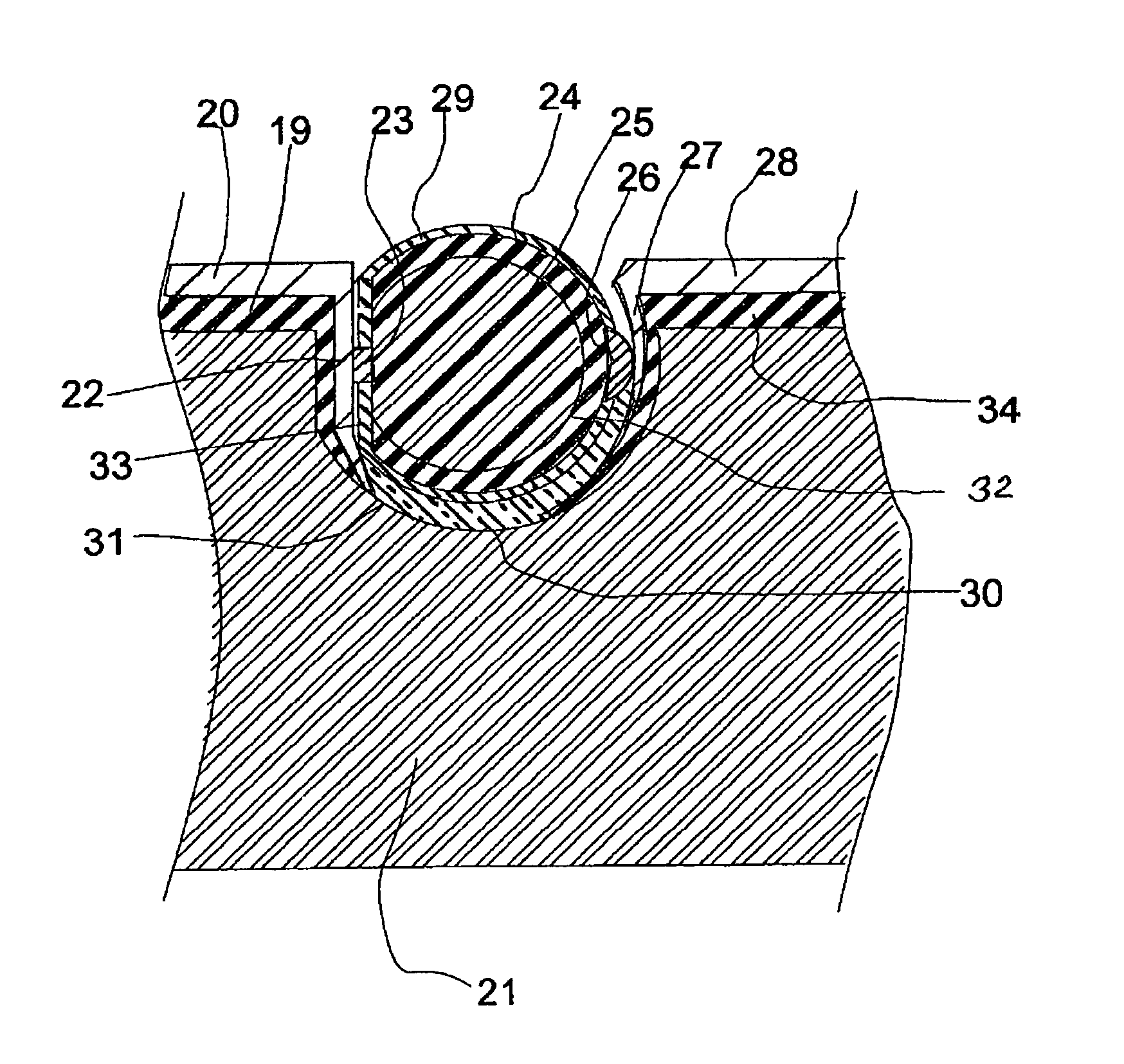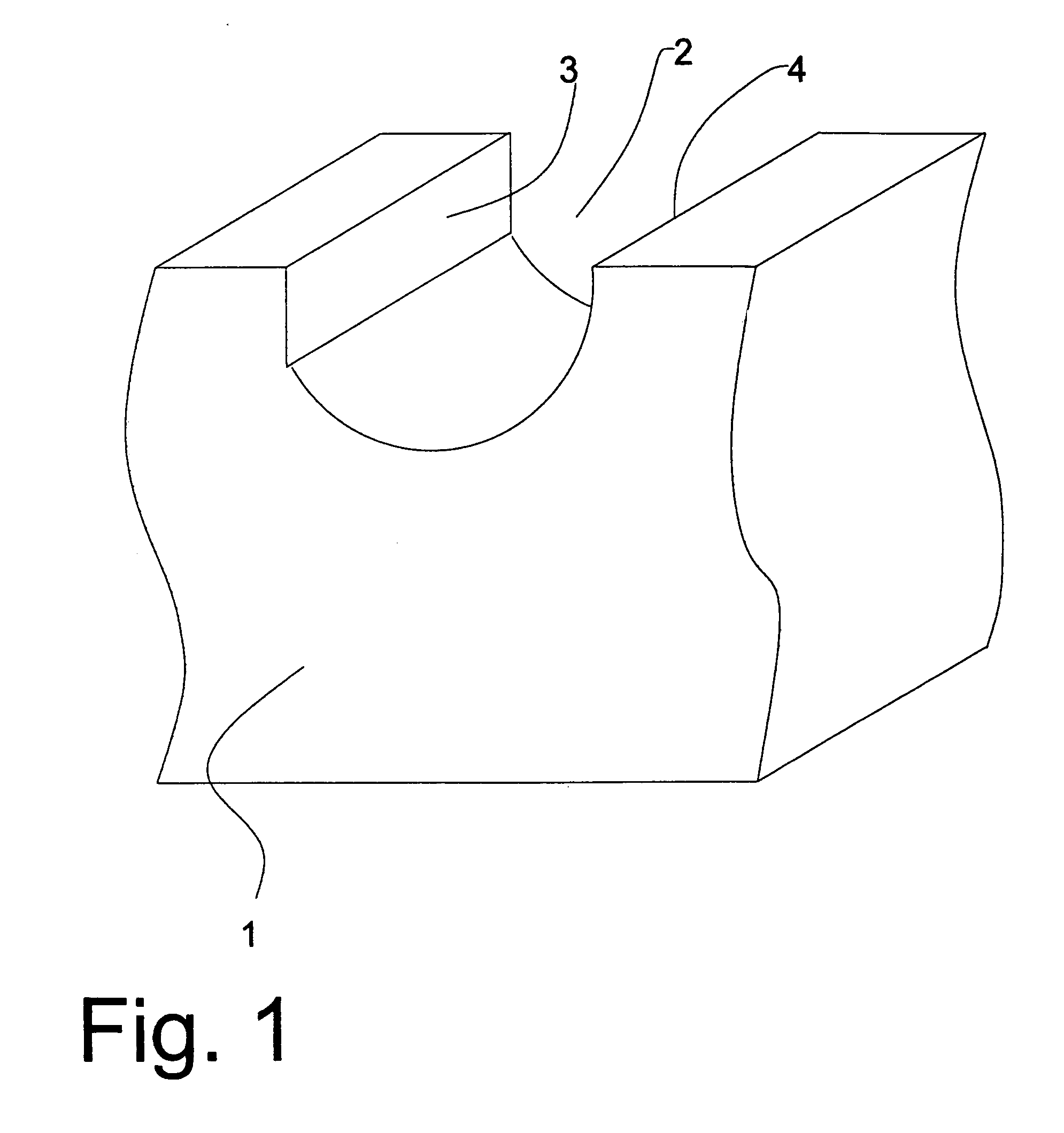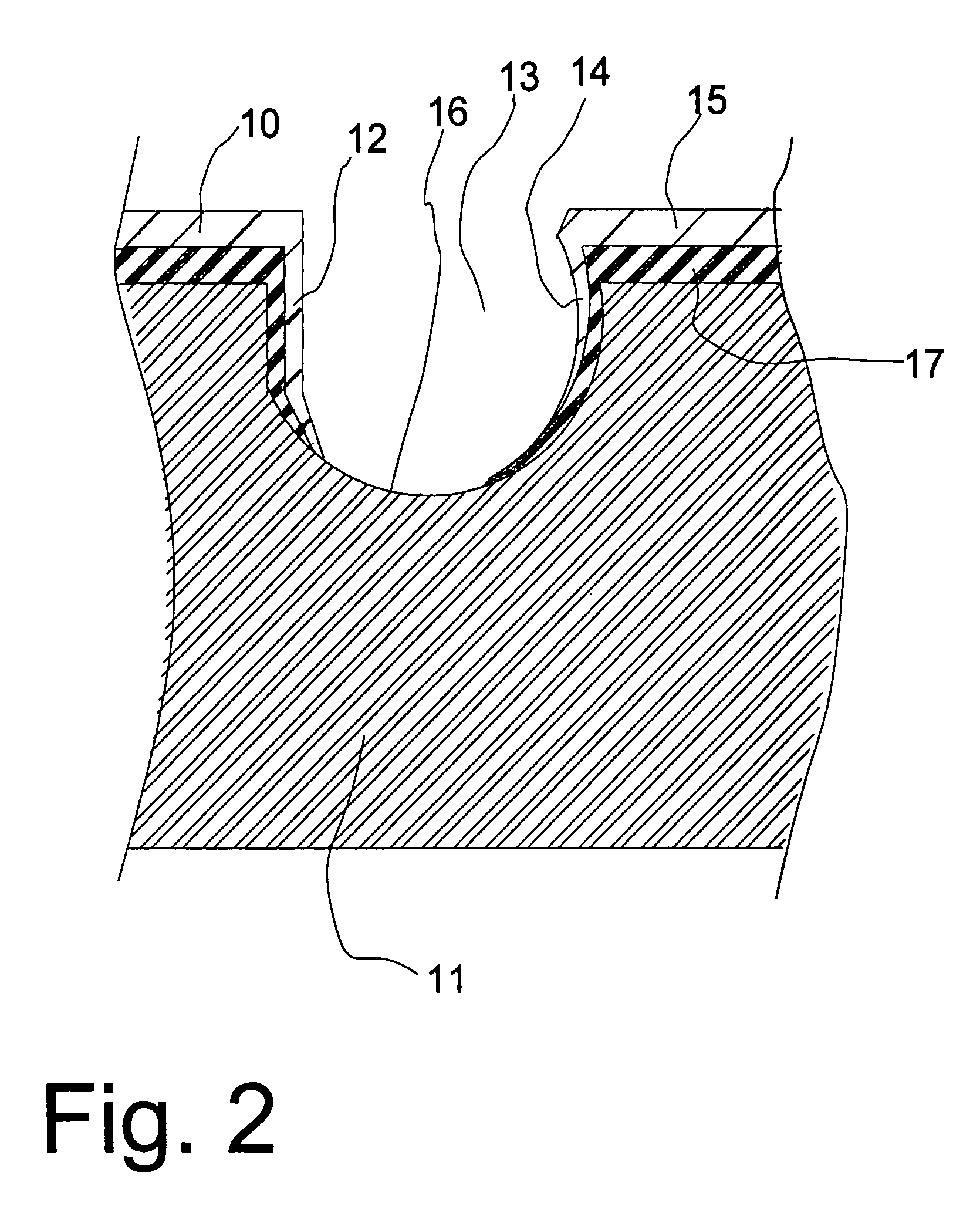Micro concentrators elastically coupled with spherical photovoltaic cells
a technology of photovoltaic cells and concentrators, applied in photovoltaics, electrical equipment, semiconductor devices, etc., can solve the problems of high energy cost of the system, arrays are expensive, inefficient, and sometimes unreliable, so as to improve the utilization of expensive semiconductors, avoid overheating, and make arrays expensive. the effect of high efficiency
- Summary
- Abstract
- Description
- Claims
- Application Information
AI Technical Summary
Benefits of technology
Problems solved by technology
Method used
Image
Examples
Embodiment Construction
Description Drawings
[0261]Several typical embodiments of the invention are illustrated in the following frames. In these drawings several variations in assembly and arrangements will be shown. In FIG. 1 a slot is cut in a dielectric material or molded from a material such as soda lime glass. The glass slot is formed as a flat 3 on one side and curved on the other side 4 to match the curvature of the side grooved semicircular spheres shown later in FIG. 3. The slot 2 may have a slight taper on the flat 3 to accommodate small mounting variations of the semiconductor and assume a tight wedging fit of the semiconductor sphere to the slot 2. Examples of other dielectric materials are:[0262]polyaramid plastic (Asahi-Kasei Chemicals Corporation Co. Ltd. Aramica Division, 1-3-1 Yakoh, Kawaski-Ku, Kawasaki City, Kanagwa 210-0863 Japan).[0263]polyimide plastic, DuPont Films, HPF Customer Services, Wilmington, Del. 19880[0264]silicone rubber, Sylgard® 184 Silicone Optical coupling adhesive Dow...
PUM
 Login to View More
Login to View More Abstract
Description
Claims
Application Information
 Login to View More
Login to View More - R&D
- Intellectual Property
- Life Sciences
- Materials
- Tech Scout
- Unparalleled Data Quality
- Higher Quality Content
- 60% Fewer Hallucinations
Browse by: Latest US Patents, China's latest patents, Technical Efficacy Thesaurus, Application Domain, Technology Topic, Popular Technical Reports.
© 2025 PatSnap. All rights reserved.Legal|Privacy policy|Modern Slavery Act Transparency Statement|Sitemap|About US| Contact US: help@patsnap.com



